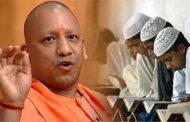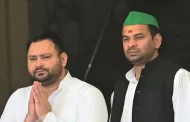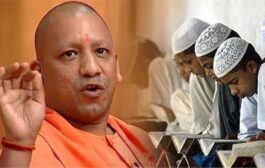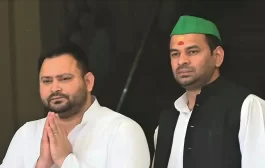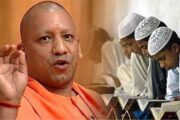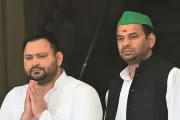Rahul Gandhi’s formal resignation from the post of Congress president has opened a Pandora’s box for the Congress. Not accustomed to taking decisions without either the Gandhis as the guiding force or the focal point, the party now faces several complex challenges.
Matters are made worse by the fact that there is no inherent respect for democratic culture within the party. Rahul has virtually left the question of the revival of the Congress squarely on the shoulders of those who have been enjoying the perks of position without any responsibility or accountability. In his resignation letter, he put emphasis on accountability.
“Accountability is critical for the future growth of our party,” he had said in his letter which he tweeted on Wednesday. This is likely to trigger a churn within. Here are a few critical matters the party would have to grapple with immediately:
Multiple power centres
Till date, Congress has been centred around the party’s first family, which has acted as the topmost and the only power centre. That’s also because the current Indian National Congress is the re-christened Congress (Indira) faction that broke away from the parent Congress party in 1969. So, technically, it has been a family party for the past half-century.

At the next level are the senior-most leaders who created power centres around them. Nobody else, including the party, mattered. The sole objective of these second-level leaders devoid of mass appeal has been to keep their respective fiefdoms alive – irrespective of whether they win an election or not.
This became evident during the selection of chief ministers in three Congress-ruled states of Madhya Pradesh, Chhattisgarh and Rajasthan. The process of lobbying by these leaders became so intense that it took days for the party’s top leadership to come to a decision.
The third power centre, who recently acquired that position, is Priyanka Gandhi Vadra, who was appointed general secretary in the party. After the party lost the Lok Sabha election, she said that her team would identify those party workers who had been instrumental in playing a second fiddle during polls.
A new president, if elected, would have to work in tandem with two former presidents – Sonia Gandhi, who’s the UPA chairperson and leader of Congress Parliamentary Party, and Rahul Gandhi, Priyanka Gandhi Vadra, and the top Congress veterans who form the only power centre outside the family.
The new president, who probably would be one among the second level leaders, shall have to deal with the peer group as well.
Given his/her post, the new president shall also have his/her own power centre and it needs to be seen how much authority one can exercise. The loyalists may still hang on around the power centres.
Can the new president afford to be more powerful than the Gandhis?
Given the present ramshackle condition of the Congress, the new president will have to take certain tough, path-breaking decisions. This may not be palatable to those belonging to other power centres.
Rahul rightly pointed out in his resignation note: “Rebuilding the party requires hard decisions and numerous people have to be made accountable for the failure of 2019…Congress party must radically transform itself.”
To bring radical transformation, one would have to override the Gandhis, but how much of that is actually possible is a big question. It won’t be an easy task for the new chief.
Is there a leader with pan-Indian acceptability?
Rahul had to face brickbats for all the failures of Congress, including his dynastic credentials. Out of four presidents – after former prime minister Rajiv Gandhi’s assassination – Rahul served as the Congress chief for the shortest length of time (one-and-a-half years). The longest was Sonia Gandhi’s term (19 years) and it’s in her tenure that Congress had faced the worst electoral debacle in 2014. Rahul inherited a moth-eaten Congress.
It can’t be denied that Rahul is the one who has a mass appeal and the ability to pull crowds. The same was true for his mother Sonia during her tenure. During Lok Sabha polls, he criss-crossed the country campaigning for the party and improved party’s tally – however less it may be – from 44 in 2014 to 52 in 2019.
The new party president will need to have a pan-India appeal and acceptability.
Will Congress split under new leader?
The history of Congress has evidence to show that presidents selected outside the Nehru-Gandhi family led to splits within the party. During the tenures of PV Narasimha Rao (1991-96) and Sitaram Kesri (1996-98) as Congress presidents, many known leaders had quit the party, as they had strong allegiance to Gandhi family.
The following years were difficult for the Congress. Kesri’s lack of support among the masses caused damage to the party.
Recently, Narasimha Rao’s grandson NV Subhash alleged that Congress sidelined Rao to keep focus on the Nehru-Gandhi family.
“After Congress’ 1996 debacle, he (Rao) was sidelined due to many issues, which were not concerned with his government policies. The Congress party thought that if anyone apart from Gandhi-Nehru family continues, then they themselves will not be noticed and so, he was sidelined,” Subhash told ANI.
The new president shouldn’t rule out such a possibility.
But it can’t be denied that it was under Rao that the country witnessed economic reforms and liberalisation, which changed the face of India forever. So, a non-Gandhi president may actually turn around the party’s fortune and may prove good for the Congress.
Can new president remove the dead wood?
The second-level power centre within the Congress is full of dead woods, many of whom are also members of the party’s top decision-making body called the Congress Working Committee (CWC) that elects the party president. Their sole objective is to cling to their posts and enjoy power within the party. None of the senior leaders at present have a mass appeal and popularity, and no work on field to showcase.
Rahul had rightly said, “It’s a habit in India that the powerful cling to power, no one sacrifices power.”
Accepting his accountability as Congress president for the drubbing in the election, Rahul resigned and didn’t yield to the requests made by his party workers and leaders to rescind his decision.
But, how many leaders from the second rung power centre resigned? Except requesting Rahul to withdraw his resignation, none stepped down. They silently watched the episode. A large number of them couldn’t even win their seats in the election.
Rahul maybe had a point when he said, “At times I stood completely alone and am extremely proud of it.”
The BJP has set an example in the country by retiring its old leaders during the Lok Sabha election and Assembly polls, and replacing them with fresh faces, who too won elections.
Will the new Congress president be able to remove these dead woods, who have been protected by the first family for years? Does anyone within the Congress framework have the guts to take such a decision?
What’s next?
As Rahul had insisted upon having an outsider (non-Gandhi family candidate) as party president, it’s equally important that the Gandhis should stay away and leave the Congress alone. Let the new leadership take decisions. But the dilemma is whether it’s practically possible.
source: Firstpost.com


